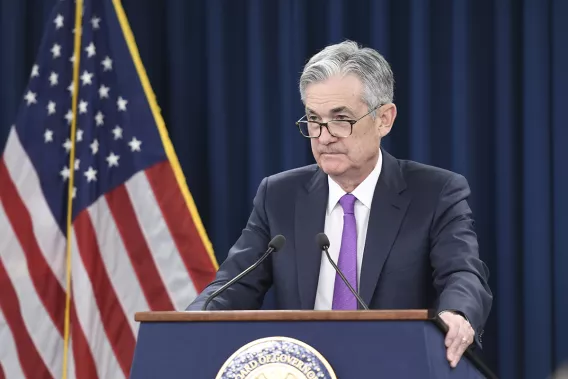- | Monetary Policy Monetary Policy
- | Policy Spotlights Policy Spotlights
- |
The Relationship between Interest Rates and Monetary Policy

In this Policy Spotlight series, Mercatus scholars provide a high-level overview of their positions on key issues facing our nation’s policymakers.
Monetary policy is fundamentally about influencing the supply of and demand for money. Yet many reporters, and even some economists, discuss monetary policy by referring to changes in interest rates. The Federal Reserve System’s (Fed) Federal Open Market Committee (FOMC) usually sets an interest rate target, and changes in this target are frequently viewed as being equivalent to changes in monetary policy. Low short-term interest rates are often viewed as expansionary policy and high rates as contractionary policy. Unfortunately, this view is often incorrect and the source of a great deal of misunderstanding.
Monetary Policy’s Impact on Interest Rates
It is true that expansionary monetary policies (or “easy money”) usually lead to a temporary decrease in the level of interest rates. For instance, open market purchases of US Treasury bonds by the Fed don’t just boost the money supply; they also tend to reduce short-term interest rates by boosting the amount of liquidity in the economy. Conversely, contractionary monetary policies (“tight money”) often lead to a temporary increase in short-term interest rates. But it is not generally valid to work backwards and make an inference about monetary policy from a change in interest rates.
Reasoning from a Price Change
Those who assume that lower rates are easy money, and vice versa, are engaging in the fallacy of reasoning from a price change.
As an analogy, a decrease in the supply of oil will often lead to higher prices for oil, as in 1974 and 1980. But the reverse is not necessarily true. It is not always the case that an increase in the price of oil shows that the supply of oil has decreased. For example, global oil prices rose sharply between 2002 and 2008 owing to a rise in global oil demand, especially from developing countries such as China. Supply did not decrease.
Drawing an inference from a price change without first considering whether the price change was caused by a supply shift or a demand shift is called reasoning from a price change.
Factors Influencing Interest Rates
Interest rates are impacted by many factors, including monetary policy, economic growth, and inflation.
- An expansionary monetary policy may reduce interest rates in the short run. But it may also boost national output and inflation.
- Increases in output and inflation often lead to higher interest rates in the long run. Lenders demand higher rates to be compensated for the effects of inflation, and rising output (and incomes) leads to more demand for credit, pushing up interest rates.
Nominal GDP as an Indicator of Monetary Policy
When evaluating Fed policy, one shouldn’t just look at interest rates. Rather, one should focus on changes in variables such as inflation and GDP. If interest rates are low, but inflation and GDP are also falling, then the low rates may reflect broader macroeconomic forces, not easy money.
Nominal GDP growth is composed of the sum of inflation and growth in real GDP. Because interest rates are not a reliable indicator of monetary policy, many economists (including former Fed Chairman Ben Bernanke) believe that changes in nominal GDP provide a better indication of whether monetary policy is too easy or too tight.

